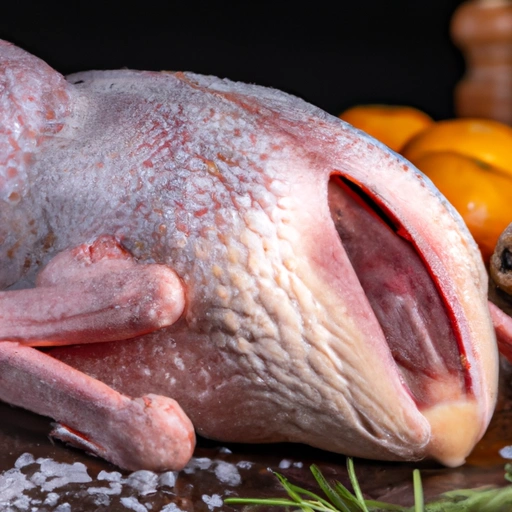Duck
Description

Duck is a luxurious and flavorful poultry that has graced tables around the world for centuries. Its rich taste and succulent texture make it a favorite for those looking to add depth to their dishes. Ducks are bred both in the wild and on farms, and the meat can vary greatly depending on the diet and breed of the duck. With a unique taste profile that stands out from chicken and turkey, duck adds a gourmet touch to any meal.
Common uses
Duck is commonly used as a centerpiece for special occasions and gourmet meals. It is also utilized in various products such as duck sausages, pâtés, and broths. In many cultures, the fat is rendered and used for cooking, adding a rich flavor to a variety of dishes.
Nutritional value
Calories
Duck meat is calorie-dense, with a 3.5-ounce (100 gram) serving providing about 337 calories (1410 kJ).
Protein
This serving size also contains about 19 grams of protein, which is essential for muscle maintenance and repair.
Fat
Duck is known for its higher fat content, with 28 grams of fat per serving, mainly from the skin.
Carbohydrates
Duck meat itself contains no carbohydrates, making it suitable for low-carb diets.
Vitamins
It is a good source of B-vitamins, particularly B-12 and niacin, which are important for energy metabolism and neurological health.
Minerals
Duck also provides minerals such as selenium, phosphorus, and iron, which support various bodily functions including thyroid health and oxygen transport.
Health benefits
The protein in duck supports muscle growth and repair, while its iron content helps prevent anemia. Selenium is an antioxidant that aids in defending the body against damage from free radicals. However, it is important to consume duck in moderation due to its high fat content.
Potential risks
Consuming large amounts of duck, especially with the skin, can lead to an excessive intake of saturated fats, which are linked to cardiovascular diseases. Proper handling and cooking are also crucial to avoid foodborne illnesses.
Common recipes
Duck is featured in a diverse array of recipes ranging from roasted whole ducks to savory duck curries and rich, slow-cooked stews.
Cooking methods
Popular cooking methods include roasting, grilling, braising, and confit, which is a process of slow-cooking duck in its own fat.
Pairing with other ingredients
Duck pairs well with a variety of flavors such as orange, cherries, and hoisin sauce, as well as with root vegetables and dark, leafy greens.
Summary
Duck is a rich and flavorful meat that serves as a gourmet ingredient in many cuisines. While it offers nutritional benefits such as protein and essential minerals, it is also high in fat. Duck can be cooked using various methods and pairs well with sweet and savory accompaniments. When consumed in moderation and prepared safely, it can be part of a balanced diet.